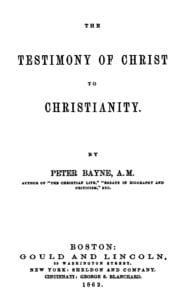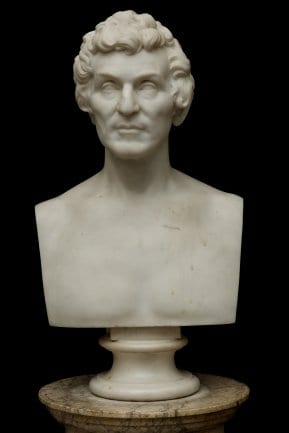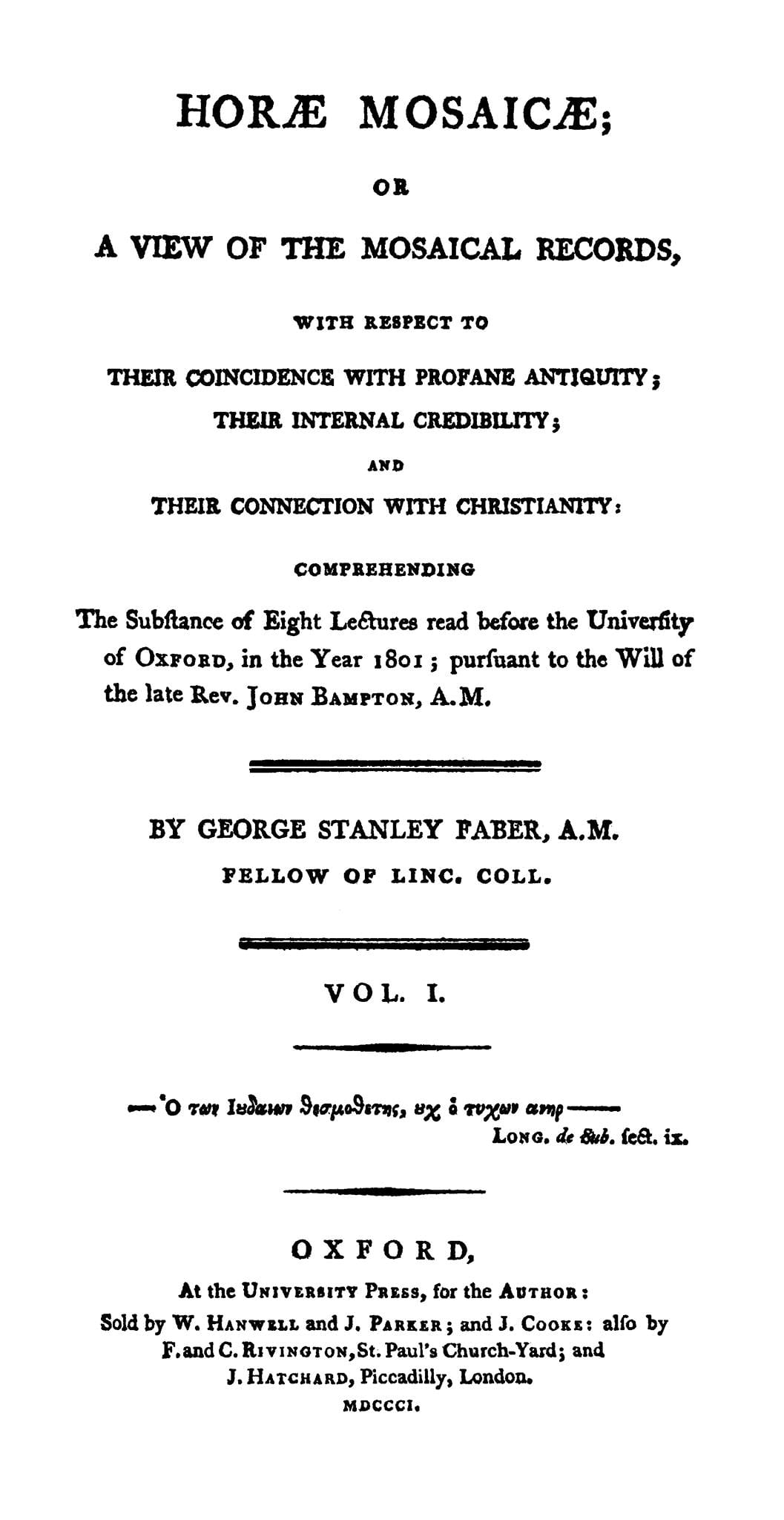 There is not, to my knowledge, in the whole range of literature an evasion like that in Hume’s Essay on Miracles. I can find no word, no figure of speech, no parallel case, by which adequately to represent its enormity. If we suppose a man of the highest character put on trial for his life, informed of the law by which he is to be judged, then bidden to stand aside until some one who claims a distant relationship to him, and has no character to plead, is tried in his stead, and lastly recalled to be told that he is capitally condemned, we shall have no more than faintly shadowed forth the outrageousness of Hume’s proceeding. “Jesus Christ,” he virtually proceeds, “is alleged to have given sight to the blind. He may stand aside; here is a miracle performed by the god Serapis, — a bull with some speciality about the tail, — through instrumentality of Vespasian, and we shall take it up instead. Jesus Christ is said to have made the lame walk. Well: the Cardinal de Retz was informed that a man who rubbed holy oil on the stump of his leg recovered powers of walking; yet there was no miracle, and, of course, none was performed by Christ. Jesus is affirmed to have raised the dead. We shall prove the negative if we can make it appear that certain persons falsely or mistakenly alleged themselves to have derived advantage from touching the tomb of Abbe Paris.” Such is literally Hume’s mode of applying his theory that the occurrence of a miracle must be a greater wonder, and, therefore, less credible, than the falsehood or mistake of any conceivable testimony to the miracles related in the Gospels.
There is not, to my knowledge, in the whole range of literature an evasion like that in Hume’s Essay on Miracles. I can find no word, no figure of speech, no parallel case, by which adequately to represent its enormity. If we suppose a man of the highest character put on trial for his life, informed of the law by which he is to be judged, then bidden to stand aside until some one who claims a distant relationship to him, and has no character to plead, is tried in his stead, and lastly recalled to be told that he is capitally condemned, we shall have no more than faintly shadowed forth the outrageousness of Hume’s proceeding. “Jesus Christ,” he virtually proceeds, “is alleged to have given sight to the blind. He may stand aside; here is a miracle performed by the god Serapis, — a bull with some speciality about the tail, — through instrumentality of Vespasian, and we shall take it up instead. Jesus Christ is said to have made the lame walk. Well: the Cardinal de Retz was informed that a man who rubbed holy oil on the stump of his leg recovered powers of walking; yet there was no miracle, and, of course, none was performed by Christ. Jesus is affirmed to have raised the dead. We shall prove the negative if we can make it appear that certain persons falsely or mistakenly alleged themselves to have derived advantage from touching the tomb of Abbe Paris.” Such is literally Hume’s mode of applying his theory that the occurrence of a miracle must be a greater wonder, and, therefore, less credible, than the falsehood or mistake of any conceivable testimony to the miracles related in the Gospels.
Peter Bayne, The Testimony of Christ to Christianity (Boston: Gould and Lincoln, 1862), pp. 28-29




